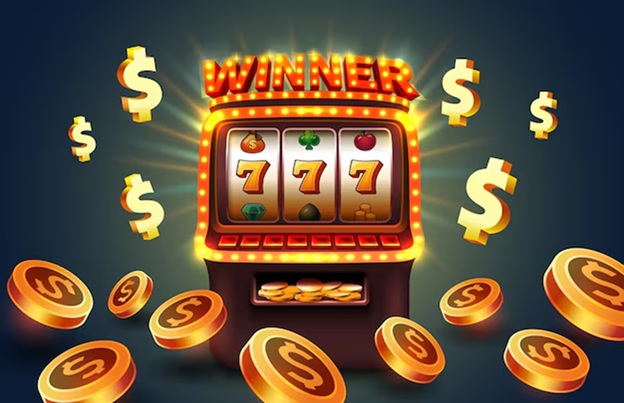
Loyalty Programs That Drive Long-Term Customer Engagement
Loyalty programs have become a cornerstone of successful businesses looking to cultivate long-lasting relationships with their customers. These programs not only reward consumers for repeat purchases but also foster a deeper emotional connection with brands. As businesses strive for sustainable growth, implementing effective loyalty strategies can significantly enhance customer retention and overall satisfaction. An example of businesses leveraging loyalty can be seen at Loyalty Programs That Boost Long-Term Value betwinner, where customer engagement is a priority.
Understanding Loyalty Programs
Loyalty programs are structured marketing strategies designed to encourage customers to continue to shop at or use the services of a business associated with the program. They can take many forms, including points systems, tiered rewards, and exclusive offers. The essence of these programs is to create a perception of value for the customer, turning one-time buyers into loyal patrons.
Types of Loyalty Programs
There are several types of loyalty programs that businesses can implement, each catering to different consumer behaviors and preferences:
- Points-Based Programs: Customers earn points for every purchase that can be redeemed for discounts or free products. This is the most common type of loyalty program.
- Tiered Programs: Customers progress through tiers of loyalty based on their spending, unlocking greater rewards as they move up. This encourages more spending.
- Paid Loyalty Programs: Customers pay a fee to join the program in exchange for exclusive benefits, such as free shipping or special pricing.
- Coalition Programs: Different businesses come together to offer a joint loyalty program, allowing customers to earn and redeem points across multiple brands.
- Gamified Programs: These incorporate elements of game design to engage customers in earning rewards, making the experience more interactive and enjoyable.
Benefits of Loyalty Programs
Implementing a loyalty program brings numerous advantages, not just for the business but also for consumers:
- Increased Customer Retention: Businesses can significantly improve retention rates by creating programs that reward repeat purchases.
- Higher Average Transaction Values: Loyalty members often spend more per transaction compared to non-members, leading to increased revenue.
- Customer Insights: Loyalty programs provide valuable data on consumer behavior, which can inform marketing and product development.
- Strengthened Brand Loyalty: By rewarding customers for their loyalty, businesses can create advocates who actively promote the brand.
- Competitive Advantage: An effective loyalty program can differentiate a brand in a crowded marketplace, attracting new customers.
Implementing an Effective Loyalty Program
To create a successful loyalty program, businesses should follow several best practices:
- Understand Your Customers: Use data analytics to understand what motivates your customers and tailor the program to meet those needs.
- Make It Simple: Ensure the program is easy to understand and navigate to prevent customer frustration.
- Communicate Benefits Clearly: Clearly outline the benefits of joining the program so customers can see the value in their participation.
- Personalize Rewards: Use customer data to offer personalized rewards, making members feel valued and understood.
- Promote the Program: Utilize multiple channels to promote your loyalty program, from social media to in-store signage.

Case Studies: Success Stories in Loyalty Programs
Numerous companies have successfully implemented loyalty programs that enhance long-term customer engagement. Here are a few noteworthy examples:
Sephora’s Beauty Insider Program
The Beauty Insider program offers members exclusive access to beauty products, expert tips, and rewards for purchases. With a well-defined tiered system, members can unlock benefits such as birthday gifts and exclusive events. This program has cultivated a vast community of loyal customers leveraging social media to share their experiences.
Starbucks Rewards
Starbucks’ loyalty program allows members to earn stars with every purchase, which can be redeemed for free drinks and food. The program also offers personalized offers and bonus stars for purchasing specific items, keeping customers returning to the store.
Amazon Prime
Amazon Prime is a subscription-based loyalty program that offers members perks, such as free shipping, exclusive deals, and access to streaming services. The program has successfully increased customer retention and average spending significantly.
Measuring the Success of Loyalty Programs
To evaluate the effectiveness of a loyalty program, businesses must track various metrics:
- Retention Rates: Measure how many customers remain active members over a set time frame.
- Purchase Frequency: Look at how often loyalty program members purchase compared to non-members.
- Average Order Value: Analyze whether loyalty members tend to spend more during each transaction.
- Engagement Levels: Monitor how actively customers engage with the program, such as participation in promotions and feedback.
- Customer Lifetime Value (CLV): Assess the overall value that a customer brings to the business over their lifetime, factoring in the loyalty program’s impact.
Conclusion
In today’s competitive marketplace, loyalty programs are more than just a marketing tool; they are essential for building lasting relationships with customers. By understanding the various types of loyalty programs, their benefits, and key strategies for implementation, businesses can create robust systems that not only drive sales but also foster brand loyalty. In a world where consumer preferences are continually evolving, adapting and optimizing loyalty programs will be integral to long-term success.
